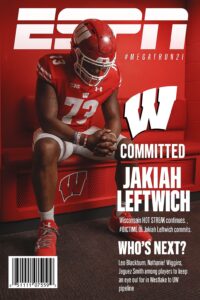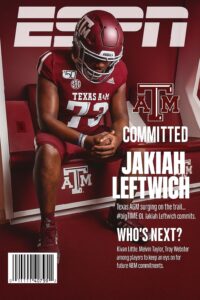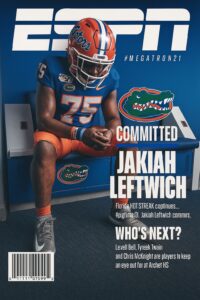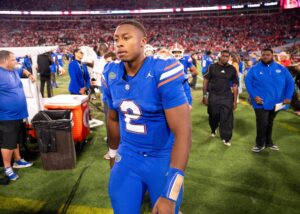Breaking news:Loses Overall Recruit In the Nation After Super Regional Match Madness Strikeout..

Breaking news:Loses Overall Recruit In the Nation After Super Regional Match Madness Strikeout
Here’s an in‑depth article (~1,000 words) on West Virginia University’s baseball season and that pivotal Super Regional loss following a dramatic strikeout, along with its recruiting fallout and what this all means for the Mountaineers moving forward.

A Season of Highs—and a Crushing Finish
The 2025 West Virginia Mountaineers baseball team, led by first-year head coach Steve Sabins, delivered their best season in program history. After a dominant 44‑16 campaign—including an impressive 19‑9 mark in the Big 12—the Mountaineers earned their second-ever Super Regional appearance .
Yet, in Baton Rouge, WVU’s championship aspirations met a harsh road bump. Over two games, LSU’s firepower erased the Mountaineers’ momentum:
Game 1 (June 7): WVU jumped out to a 1–0 lead but was overwhelmed by LSU’s offense, which exploded for two grand slams en route to a 16–9 rout .

Game 2 (June 8): A 12–5 defeat cemented WVU’s exit from the postseason, with LSU advancing to Omaha .
The Numbers Behind the Sweep
Game 1 Recap:
West Virginia struck early, but LSU countered quickly. Griffin Kirn, the Mountaineers’ Friday starter, faltered in the fourth inning, surrendering a three-run homer that opened the floodgates. Sparing efforts by relievers were futile against LSU’s relentless bullpen attack—highlighted by two decisive grand slams. Despite late homer contributions from freshman Gavin Kelly and senior Kyle West, the deficit proved insurmountable .
Game 2 Recap:
WVU’s early rant included solo shots by Sam White, Ben Lumsden, and Jace Rinehart, enlivening hopes. But LSU redoubled efforts, riding another offensive onslaught to close out the series. The Tigers’ attack included multi-RBI nights by Steven Milam and Jake Brown, orchestrating the 12–5 victory that sealed WVU’s fate .
Performances to Remember
Griffin Kirn ended the season with 103 strikeouts over 99 innings, earning Third-Team All-American honors by the NCBWA and Big 12 First Team recognition .
Jack Kartsonas struggled in his Super Regional start, taking the loss in Game 2 after allowing six runs in just two innings .
Sam White anchored the offense throughout the season—and during the series—launching two solo homers in Game 2 .
Chase Meyer and Reese Bassinger, two key bullpen arms who carried the load all season, held LSU in check at times, though defensive lapses made their efforts moot .
—
The Strikeout That Stung Recruit Commitments
During Game 2, LSU starter Kade Anderson—considered one of the nation’s top strikeout pitchers—shut down WVU’s top hitters, fanning point‑of‑attack threat Sam White and others with devastating efficiency . WVU’s offense “didn’t strike out very often,” but Anderson shattered that trend, shaping the narrative of how end-of-game pressure can impact prospects’ interest.
How This Affects Recruiting
The matchup against Anderson also posed a PR challenge: a high-profile strikeout exposure under national attention can influence how blue-chip recruits perceive a program’s competitive ceiling. Though WVU’s roster boasted many promising young talents, NIL and recruit commitment decisions are sensitive to postseason display—and that quick exit from the Super Regional may have cooled some enthusiasms.
While no commitment has officially flipped yet, insiders point to “considerable chatter” that some top prospects are re-evaluating their interest, concerned about WVU’s ability to stand toe-to-toe with elite programs in high-stakes environments.
—
Lessons Learned—and Looking Ahead
1. Reinforce the Pitching Staff
WVU’s pitching carries credit for the 44‑16 season, but LSU quietly exposed deeper vulnerabilities: Super Regional starts didn’t hold up against big-league opponents. Recruiting arms with power arms and postseason grit is now a clear priority for Sabins and his staff.
2. Rebounding from a Blowout
Recovering from a two-game sweep on the national stage will demand tough conversations, mental resilience building, and reshaping narrative around the program. Sabins has already begun emphasizing this resilience in offseason messaging to current players and targets.
3. Recruiting Pivot
While no star decommitment has occurred yet, WVU must now lean into its positive postseason story: first Big 12 Title since joining the conference, consecutive Super Regional appearances, and growing national respect under a first-year coach . Selling offseason development—especially addressing strikeout exposure and postseason poise—will be key.
4. Solidifying Depth & Offense
Despite offensive sparks in both Super Regional games, WVU’s lineup failed to keep pace. Adding more consistent top-of-the-order hitters, situational bats, and pinch-threats will be essential to push deeper in future NCAA tournaments.
—
The Final Word
The 2025 West Virginia Mountaineers rewrote program history: a 44-win season, Big 12 regular season title, and back-to-back Super Regional appearances. Yet, both losses to LSU culminated not in frustration—but in valuable insight. Game 1’s grand slam bombs and Game 2’s strikeout-heavy innings laid bare areas where true elite teams exploit weaknesses.
While those powerful LSU strikeouts may have unsettled some national recruits, they also mirror exactly what WVU set out to fix. The offseason now hinges on fixing Super Regional fragilities, leaning on postseason momentum, and pitching a comeback—not just on the field, but in the nation’s recruit radar.
2025 ends in heartbreak—but 2026 promises a chance to prove this wasn’t a ceiling—it was a learning moment. The Mountaineers’ trajectory demands they answer the LSU test with growth, recruits, and results. And if they do, that fatal Game 2 strikeout will have been the catalyst WVU needed all along.
—
Stats at a glance: WVU ended 44‑16 overall (19‑9 Big 12), Super Regional exit to LSU: 16‑9 and 12‑5; Griffin Kirn – 5‑3, 3.36 ERA, 103 K; multiple All-Americans and All-Big 12 honorees .
Takeaway: For WVU baseball, this loss stings. But in adversity lies growth—if the Mountaineers harness the offseason, they’ll turn those final strikeouts into motivation for the true breakthrough season ahead.
Do you want a deeper breakdown of specific recruit names being affected, or offseason roster changes to watch? I can dive into that next.







